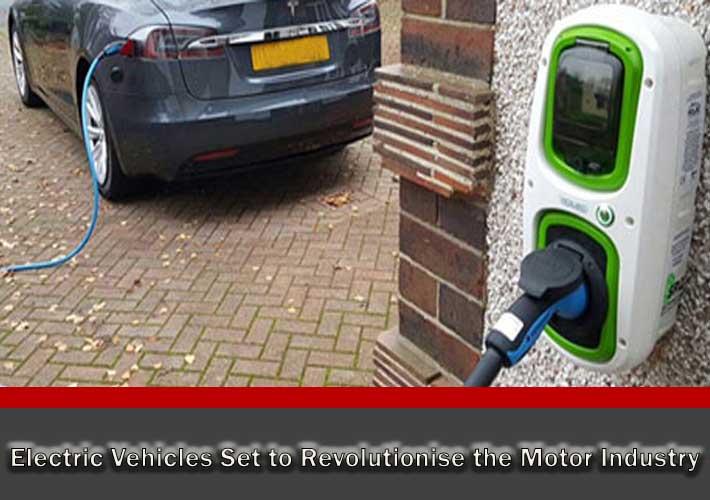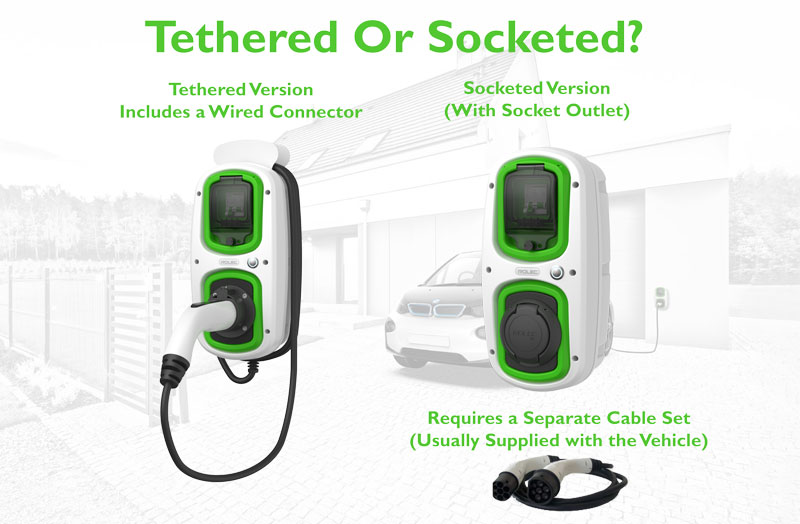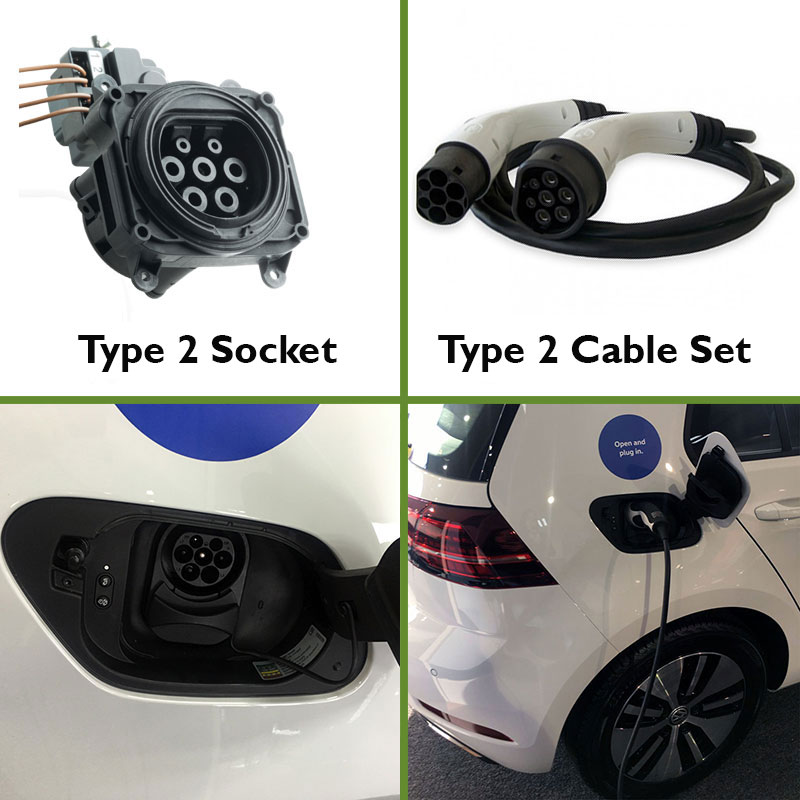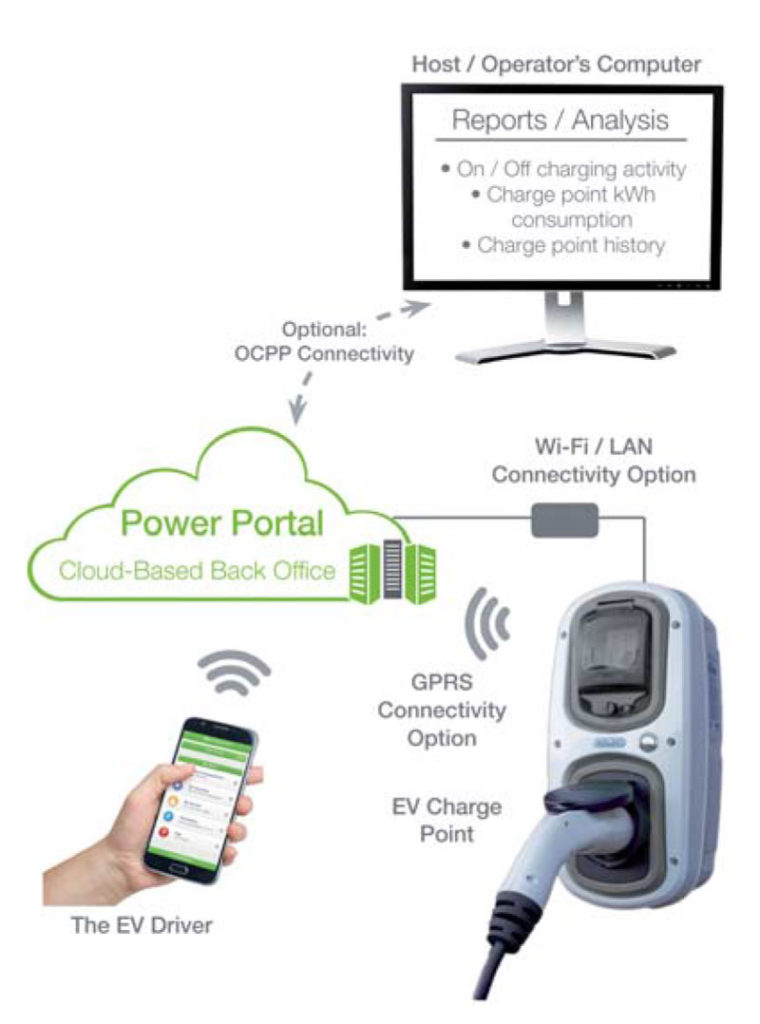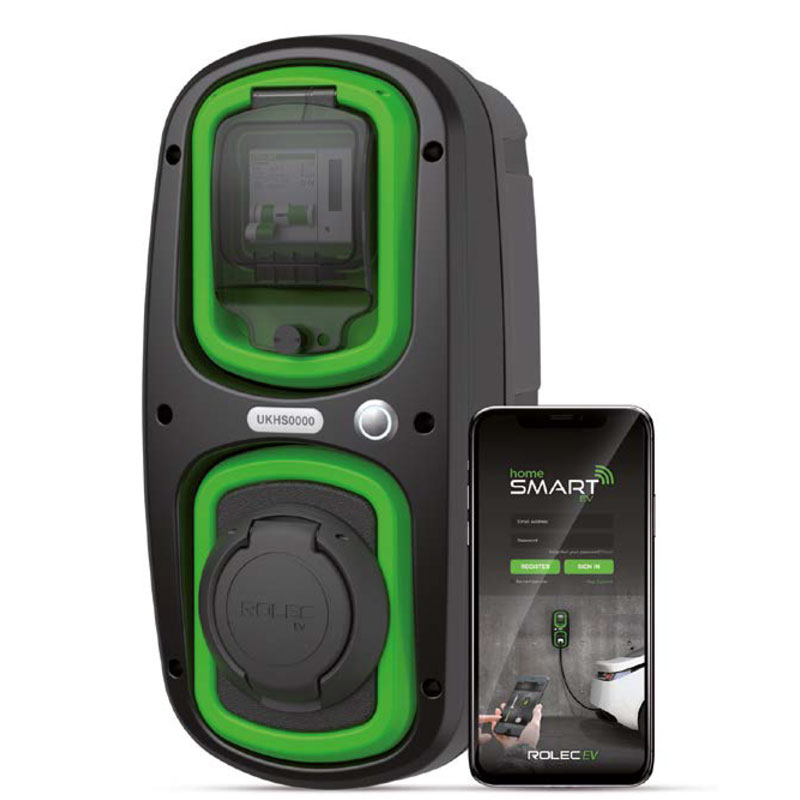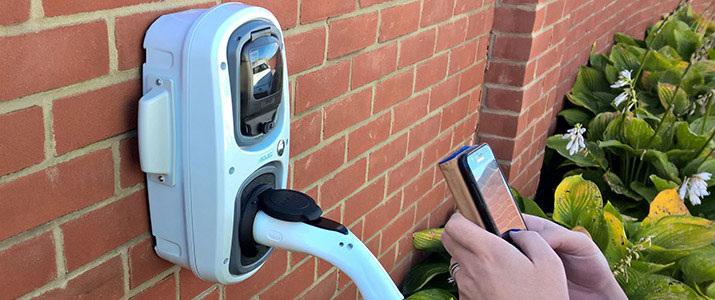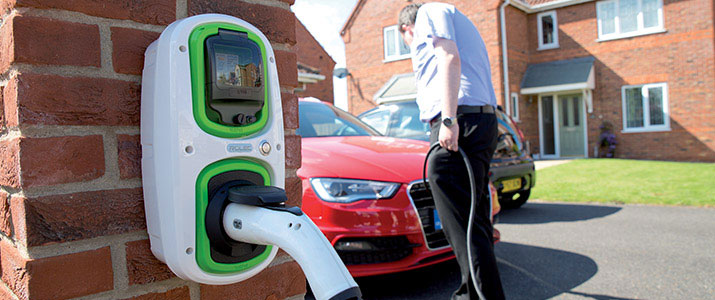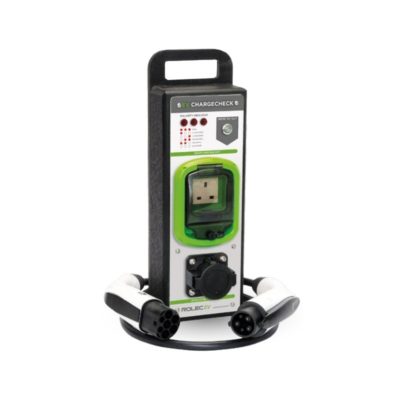Electric Vehicles Set to Revolutionise the Motor Industry – Time to Take Charge!
EV stands for Electric Vehicle; meaning a car or van powered by electricity. By 2040 the UK Government aims to ban all production of diesel and petrol-powered vehicles in favour of EVs. Whether you’re interested in saving the planet or reducing your own transportation costs, this change is coming and will eventually affect us all.
With even more ambitious targets in place from as early as 2030, the Government’s ‘Road to Zero’ strategy is well under-way. With a target of a 50% and 40% reduction in the sale of traditional fuel cars and vans (respectively), 2030 isn’t too far into the future. Getting motorists to switch over to a ULEV (Ultra-Low Emission Vehicle) isn’t going to be easy as it will involve re-educating entire generations of consumers and empowering them to make the change. That’s why the UK Government has started off by pledging £1.5 billon by 2020, with lots more to come.
Types of Electric Vehicle
There are different types of EVs already on the market, such as pure electric, or hybrids which combine electricity with petrol or diesel. Hybrid vehicles are known as PHEVs, which stands for Plug-in Hybrid Electric Vehicle.
Another type of EV is the FCEV which stands for Fuel Cell Electric Vehicle. These vehicles have a fuel cell stack instead of a battery. They mix hydrogen and oxygen to generate electricity.
Whichever type you opt for, a ULEV is a vehicle which emits 75g/KM of carbon dioxide or less.
Cleaner & Greener
If you’re thinking about going green and buying a low emission vehicle the Go Ultra Low website (found here) is a great source of information, and includes videos from some knowledgeable EV owners.
Reducing our dependency on fossil fuels like oil should be a key part of any environmentally aware nation’s medium and long-term goals. Helping to make the world we live in cleaner and more sustainable is better for everyone.
Keeping Up With the Electric Vehicle Industry
The EV industry is developing fast, possibly too fast for car manufacturers, EV equipment manufacturers and consumers to keep up with! EV developments, as well as some recent changes in Wiring Regulations (January 2019) and the forthcoming requirement to incorporate smart technology into EV Charge Points (July 2019), means the electrical and vehicle industries are constantly evolving, but it’s certainly exciting to be part of it.
Advances in battery technology and diminishing oil reserves means that the EV is transforming the entire motor industry, doing what LED (Light Emitting Diode) technology did for the lighting industry in recent years.
An electric vehicle is like driving around in an environmentally friendly, low energy, LED instead of an oil lantern on wheels. Newer technologies often require a larger initial investment but save you more money in the long term by reducing your energy costs.
Within just 10 years, advances in LED technology made older forms of incandescent lighting (like halogen) totally obsolete and an outright Government-ban on the inferior lighting option was imposed. With EVs, the Government is scheduling the ban and doing it in phases - providing the affected industries with more time to change their products.
Government Funded Grant Rules
OLEV (the Office for Low Emission Vehicles) is a Government-funded organisation that allows electric vehicle owners to get a discount of up to 75% off an EV charge point socket. This also includes installation costs and materials such as cables. Terms and conditions apply with this grant - it’s capped at £500 including VAT.
OLEV was set up in 2014 and has already provided more than 60,000 grants so far. The demand for EV charge points is set to quadruple; which makes sense if the UK is going to get anywhere near the Government’s ambitious target of 50% of new cars being ultra-low emission by 2030.
There are two main types of OLEV schemes which work slightly differently from each other. One scheme is for homes and is called the Electric Vehicle Homecharge Scheme (EVHS) and the other is for businesses which is called the Workplace Charging Scheme (WCS).
You need to be careful when ordering an electric vehicle charge point socket otherwise you might not be eligible for a grant and you could miss out on the funding, just because you’ve selected the wrong model number or ordered it incorrectly.
EV Charge Points for Homes
To be eligible for the EVHS funding you need to purchase the electric vehicle charge point socket through a registered OLEV installer. They will take care of everything, including the installation and paperwork. In turn you pay a modest amount directly to the installer and they essentially claim the grant back from the Government on your behalf.
The EV charge point model you choose must be registered on the OLEV EVHS (approved list available here). The installer must also be registered with OLEV on their list of approved installers, which is available here.
Home owners can claim funding for a maximum of 2 charge points at the same address per eligible EV. If you’re claiming funding for more than 1 charge point, you must have more than 1 vehicle.
The electric vehicle must have been registered with the owner after the 1st October 2016. This includes new or used vehicles and company cars.
Homeowners must also have their own off-street parking. This is going to be a problem for many terraced house owners. You may need to consider getting planning permission to install a bollard EV charge point outside your property, which is going to cost more and isn’t going to be OLEV funded.
Some further guidance about this scheme can be found here.
EV Charge Points for Businesses
If you’ve got a commercial installation and want to get a grant you need to adhere to the WCS (Workplace Charging Scheme). The WCS approved list of EV chargers can be found here. The WCS works a little bit differently, the business must claim a voucher themselves. Follow this link here to complete the online form. It takes up to 5 days to get approval and the voucher is valid for 120 days after completion.
The process works like this:
Businesses are allowed up to 20 electric vehicle charge point sockets per company and can use the voucher to gain the saving of up to £500 (including VAT) per socket. A Questions and Answers document can be found here which contains some further useful information.
Unlike EVHS, you don’t need to have a registered EV to proceed with claiming your voucher. You just need to explain your reasons for needing an EV charging point, which could be for customer or staff use for example.
Further terms and conditions can be found here.
Socket Types – Tethered Or Socketed?
The tethered version comes with a pre-wired cable with a male plug on the end, a similar design to a traditional petrol pump. The male plug fits into your vehicle. When it’s not in use, the cable is wrapped around the unit and the plug can be plugged into the socket for storage. The cable length is usually 5 metres but will differ by brand.
The socketed version just comes on its own, with a socket outlet. You’ll need your own plug and socket set (known as a cable set) to be able to charge your vehicle. Cable sets are usually supplied with new EVs, but if in doubt, go with the tethered version. You’re never going to lose that as it’s physically attached to the charge point.
Current Ratings
Most EV charge point manufacturers have versions available in 16amp (3.6 kilowatt) or 32amp (7.2 kilowatt). The cost to purchase each version is marginal and sometimes they cost the same. The smaller 16amp charging points are designed for overnight charging, compared to the 32amp chargers which can charge 90% of the battery in 3-4 hours. The 32amp chargers require a slightly thicker cable due to the extra capacity, which can increase the overall installation costs. If in doubt, I’d recommend going for the 32amp option.
Connector Types
The Mennekes Type 2 connector has won the battle and become the industry standard for EV charge points, with many of the world’s leading car manufacturers adopting it. Other connector types available are Type 1 and Type 3. Type 2 has been chosen by the European Commission as the dedicated connector type for electric chargers and vehicles. If you’re about to purchase a new EV, you’ll most likely find it comes with a Type 2 connector - but please double check before ordering.
With 7 pins, the Type 2 connector (shown above) can be used with single phase or three phase supplies. With a maximum voltage of up to 480V it has a current rating of 70amps for single phase and 63amps for three phase.
You can also get Type 2 to Type 1 converters, or complete EV charge points with the less popular Type 1 connectors.
Smart EV Charge Points
From July 2019, the Government have mandated that EV chargers will need to utilise smart technology - meaning that they must be able to be accessed remotely and be able to receive and transmit data. This will allow manufacturers (and more importantly the Government) to get a clear view of usage.
The Government plans to gather this data to reduce demand on the energy grid and is aiming at getting customers to charge their vehicles during off-peak times. Although the main point of having a workplace EV charge point would be to charge your vehicle while you’re working, which would be during on-peak times for the majority of workers.
As part of the WCS OLEV scheme, workplace charge points must already be able to transmit data. As a result, they cost more due to the additional components that they need - such as a metering device and modem.
This ruling doesn’t allow much time for manufacturers to manufacture a smart EV charge point, or develop an app and register it with OLEV. At the time I write this article, even Rolec don’t yet have an OLEV approved smart EV charge point - it’s coming soon, but unlike many other brands, market leaders Rolec are ahead of the competition with their HomeSmart series, they've done the hard part by designing and manufacturing a range of smart EV charge sockets, they're just waiting for the final OLEV approval.
OLEV have also announced that as early as 1st March, 2019, new applications for funding for EV charge points that don't contain smart technology will cease to be provided for. This really is a fast changing industry!
Smart EV chargers will have their own smartphone apps and software, which will provide users with accurate data about usage and costs. You’ll be able to monitor the status of your charge and know when your vehicle is fully charged while you go about your day.
You’ll also be able to switch your charge point off remotely so you can prevent random passers-by from using it without your consent. Potentially, you’ll log in with an app with your own user ID and it will monitor exactly what each user has used. The administrator will be able to easily provide access to whoever they like and decide if it’s going to be free or chargeable - important for a commercial undertaking.
Smart EV charge points are ultimately going to cost you more and, unless you don't want to get a grant, you don't have a choice about paying extra.
Further details about the ‘Smart Ruling’ can be found here.
Free to Use or Paid Versions
Standard EV chargers are free to use which means that any passer-by could use your charger without your consent. You can also get charge points that only activate when you insert a card, key-fob or token. As mentioned, smart EV chargers will most likely supersede these in the near future by providing users with a digital activation system.
Pricing
In terms of the Rolec WallPod series, we are now able to offer (through an installer) these models which are OLEV registered:
Both are available in 16amp or 32amp versions and the price includes installation. Our flyer is available here, which contains further information. A saving of up to £375 including VAT is waiting for you. This is based on 75% off the £500 capped value.
3 Ways to Order
Although EV charging points are available to purchase online, through local wholesalers or direct with some manufacturers, it’s not advisable to just go and buy one like you would with other equipment. This is because you might miss out on the grant.
Here are 3 ways of purchasing an EV charge point for your home:
- Purchase your EV charge point as a complete, fully installed package through a registered OLEV EV installer. This is our recommended option. If you’re eligible for the grant, then get it. Our fully accredited OLEV EV charge point installer covers the Greater Manchester area. He is called Dan and can be contacted directly via email at [email protected] or by telephone on 0333 0508274. Dan can arrange a site visit or provide you with further information about an EV charge point installation. Alternatively, please contact us directly for any other geographical area and we will coordinate with another authorised installer within the nationwide Rolec network. Additional costs may be incurred if the property isn’t within 75 miles (150 miles round trip) of an approved installer.
- If you’re already an OLEV registered installer, you can purchase an EV charger from our website here. These versions are OLEV registered for domestic use under the EVHS.
- If you don’t qualify for the OLEV funding, you can also buy a non-OLEV registered charge point here.
To order an EV charge point for your business or workplace please contact us to arrange a site visit. We will then be able to guide you through the EV charge point selection process, discuss grant funding and assess the installation.
Becoming an OLEV Registered Installer
This can be quite a lengthy process that takes a few months to complete. Firstly you need to register with an EV manufacturer such as Rolec. Then you need to attend an OLEV approved EV charging course like this, which you have to pay for. Then you need to complete the Rolec form and get approval, which also involves purchasing their EV charge point tester socket shown below:
Finally you need to complete the OLEV form here and send all your documents to them to get on their official approved installers list (available here) which now includes Dan from DTE.
When you’re ready to start installing you can purchase an EV charger from an electrical wholesaler, such as our good selves. The Rolec WallPod and EV accessories are available to buy online here, or contact us for further information at [email protected] or via telephone on 01706 860011.

